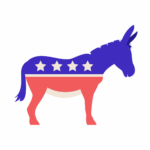
Growing Democrat Panic
November 3, 2024
Finding Kamala’s Roots Through DNA
November 3, 2024Propaganda Polling
Political polling has long been a tool used to gauge public opinion, especially during election seasons. However, in recent years, the accuracy of political polling has come under increasing scrutiny. Various factors affect the reliability of polls, including sampling methods, response rates, question phrasing, and the rise of new communication technologies. Understanding how these factors contribute to polling errors is crucial for evaluating their accuracy and limitations.
One of the fundamental challenges to accurate polling is achieving a representative sample. Ideally, a poll should capture a cross-section of the population that mirrors the electorate in terms of demographics, political affiliation, and geography. However, reaching a truly representative sample is becoming more difficult. Many polls rely on random digit dialing (RDD) or online panels, but both methods have limitations. For instance, younger people and certain minority groups may be underrepresented in phone surveys because they are less likely to have landlines or to respond to unsolicited calls.
Moreover, self-selection bias can skew online panels. These panels often consist of individuals who volunteer to take part in surveys, meaning that they might not represent the general population. While pollsters try to correct for these biases by weighting responses according to demographic factors like age, gender, and race, there is always a margin of error. If key groups are underrepresented or the weighting process is flawed, the poll results can deviate significantly from reality.
Another issue affecting the accuracy of political polling is the decline in response rates. In the mid-20th century, response rates for surveys were much higher, often exceeding 70%. Today, response rates are often below 10%, which raises concerns about whether the remaining respondents differ in meaningful ways from those who do not participate. Pollsters attempt to compensate for low response rates by conducting more interviews or adjusting their data through weighting. However, these fixes cannot fully eliminate the risk that non-responders might have systematically different views, leading to biased results.
The way poll questions are worded can significantly impact the results. Leading questions, ambiguous language, or even the order in which questions are asked can influence how respondents answer. For example, a question that suggests a particular outcome or that frames a policy issue in a partisan manner can lead to biased responses. Pollsters aim to design neutral questions, but the interpretation of those questions by respondents can still vary.
Furthermore, some polls fail to distinguish between likely voters and registered voters. Polling registered voters might include individuals who have little intention of voting, which can distort predictions. Pollsters use models to estimate voter turnout, but these models are not always accurate, especially in unpredictable elections where turnout patterns may shift dramatically.
Technological changes have also introduced new challenges for polling accuracy. The increasing use of mobile phones and online communication has disrupted traditional polling methods. As more people rely on smartphones and social media for communication, it becomes harder for pollsters to reach a random, representative sample. Moreover, the rise of social media can amplify certain voices or opinions, creating a false impression of consensus or popularity.
Additionally, political polarization has made it more difficult for pollsters to predict voter behavior. The phenomenon of “shy” voters, who may be reluctant to disclose their true preferences to pollsters, has been a factor in recent election surprises. This was seen in the 2016 U.S. presidential election, where some Trump supporters may have been less likely to express their support in polls, leading to a polling error in predicting the outcome.
While political polling remains a valuable tool for understanding public opinion, its accuracy is increasingly being questioned due to issues like declining response rates, challenges in achieving representative samples, and the impact of technology. Pollsters are continually refining their methodologies to address these challenges, but no poll is free from error. Voters and analysts should, therefore, view polling data with caution, recognizing both its utility and its limitations. In the end, political polling provides a snapshot of public sentiment at a given moment, but it is not a crystal ball for predicting electoral outcomes with precision. Political polling has long been a tool used to gauge public opinion, especially during election seasons. However, in recent years, the accuracy of political polling has come under increasing scrutiny.
C. Rich
CRich@AmericaSpeaksInk.com

C. Rich is the voice behind America Speaks Ink, home to the America First Movement. As an author, poet, freelance ghostwriter, and blogger, C. Rich brings a “baked-in” perspective shaped by growing up on the streets and beaches of South Florida in the 1970s-1980s and brings a quintessential Generation-X point of view.
Rich’s writing journey began in 2008 with coverage of the Casey Anthony trial and has since evolved into a wide-ranging exploration of politics, culture, and the issues that define our times. Follow C. Rich’s writing odyssey here at America Speaks Ink and on Amazon with a four-book series on Donald Trump called “Trump Era: The MAGA Files” and many other books and subjects C. Rich is known to cover.
“America Speaks Ink is a Google News approved source for Opinion”





